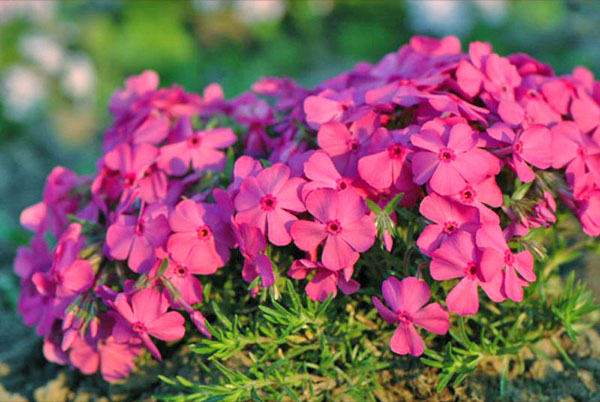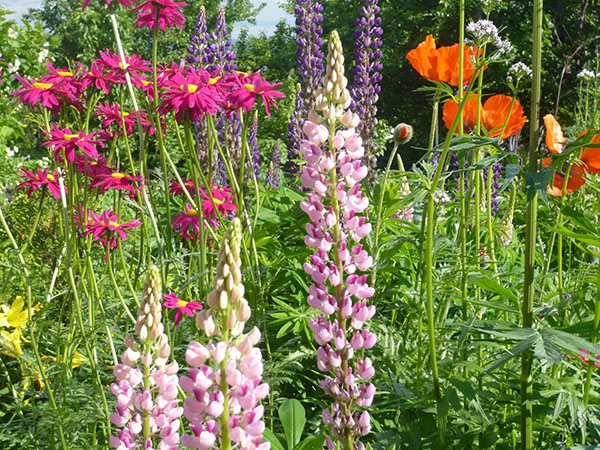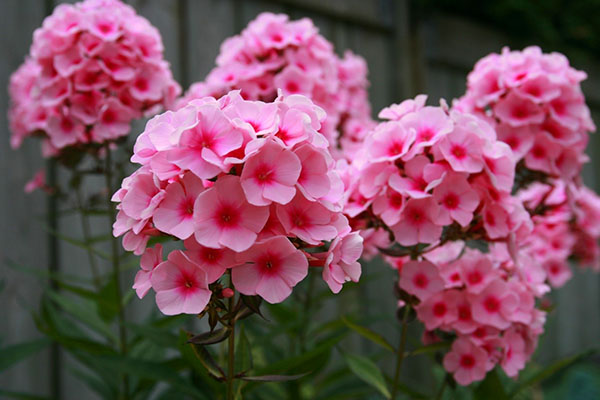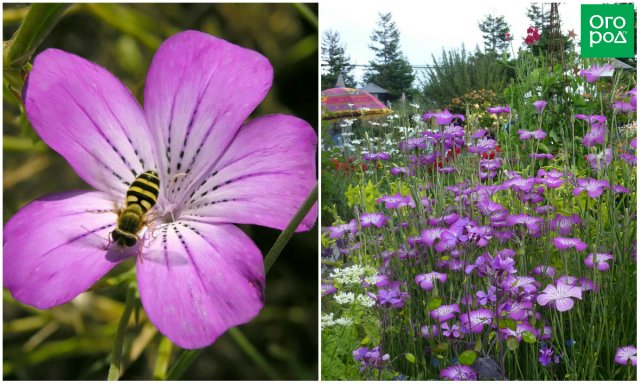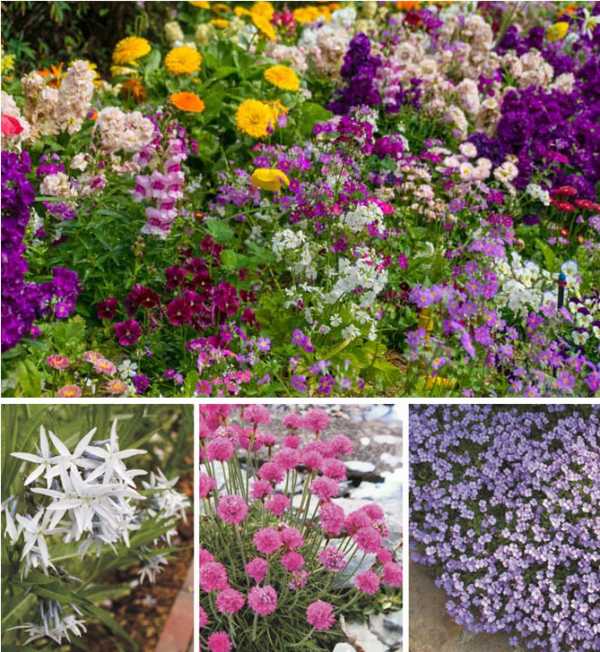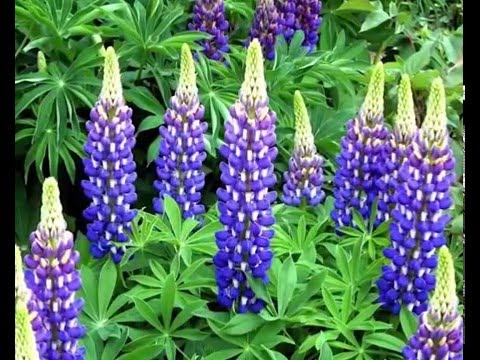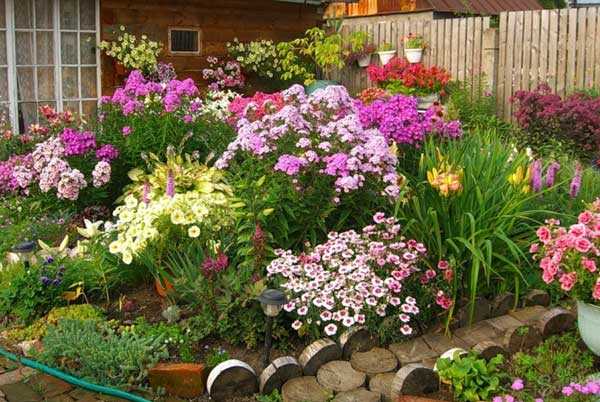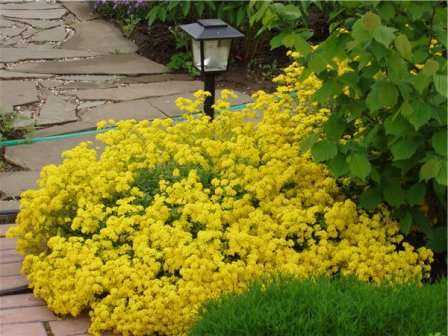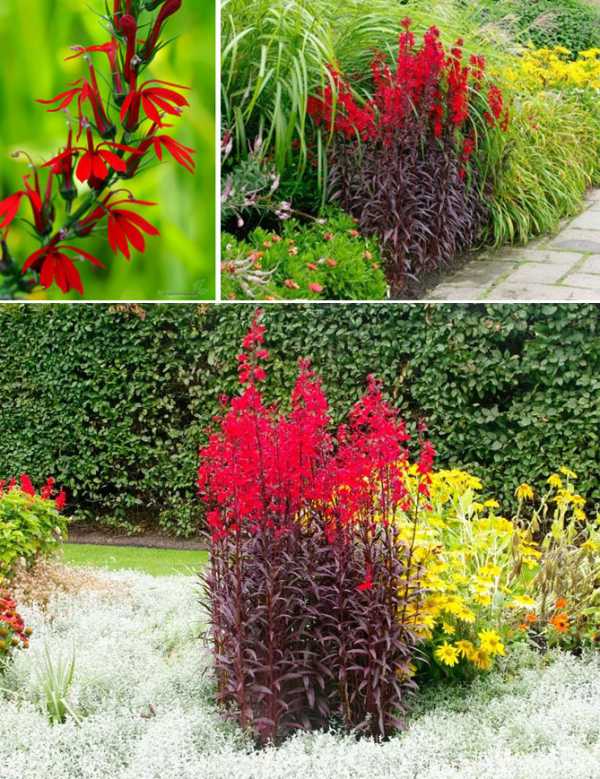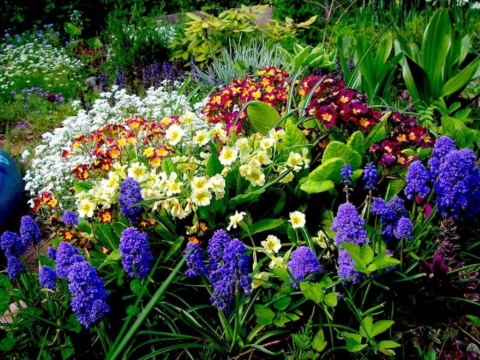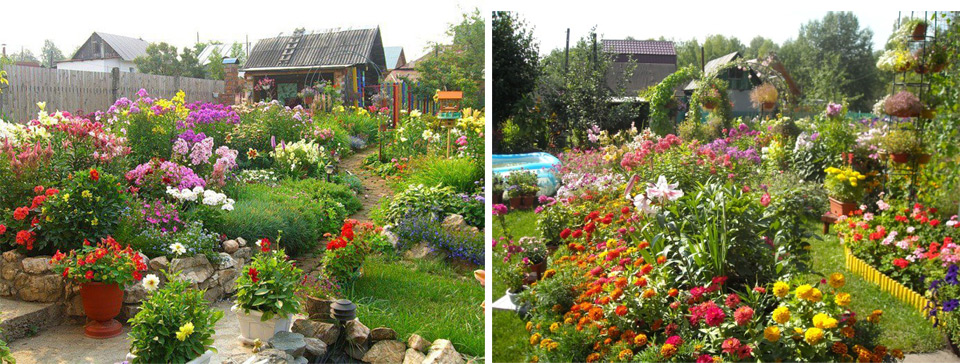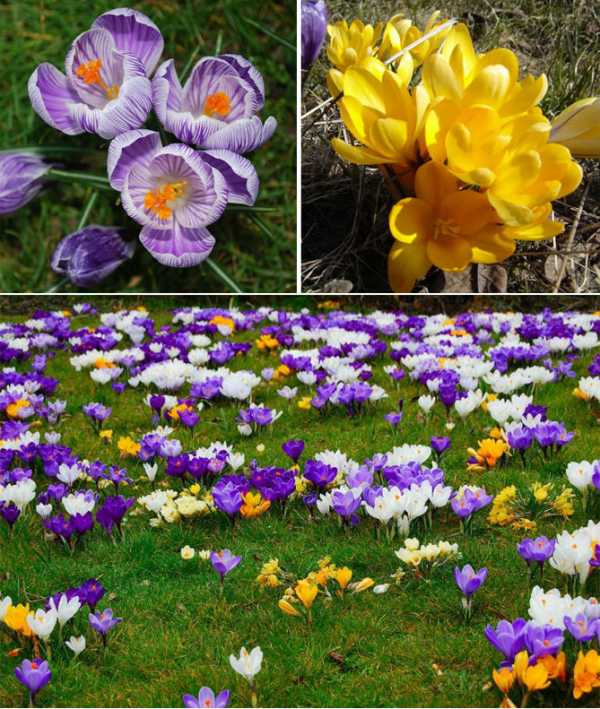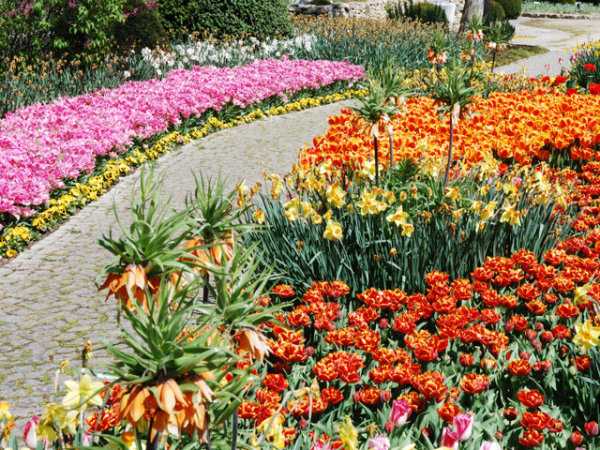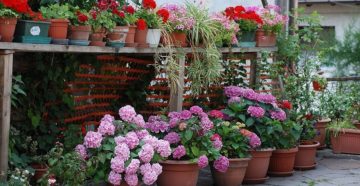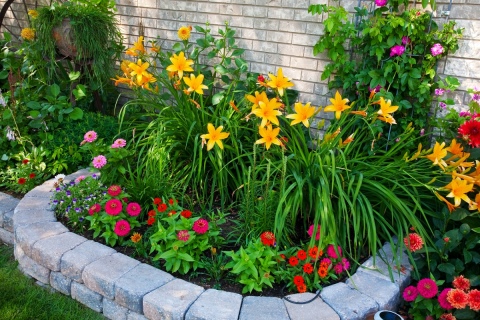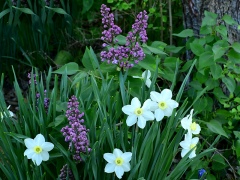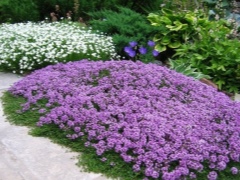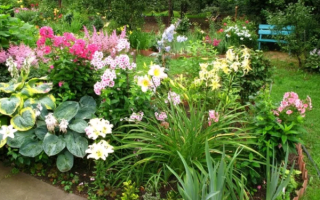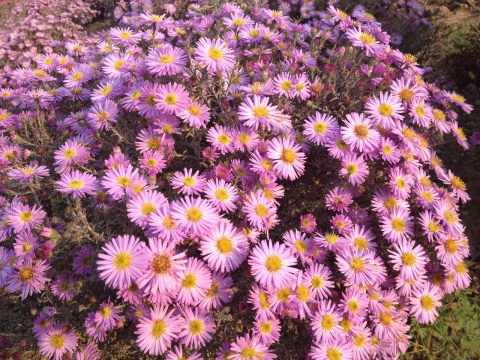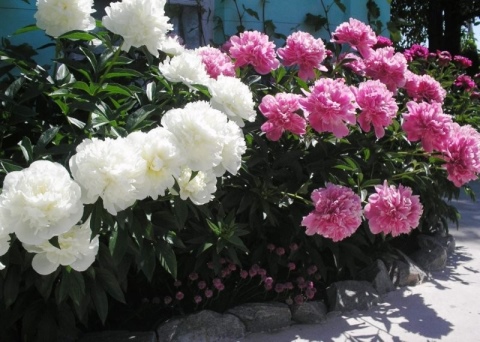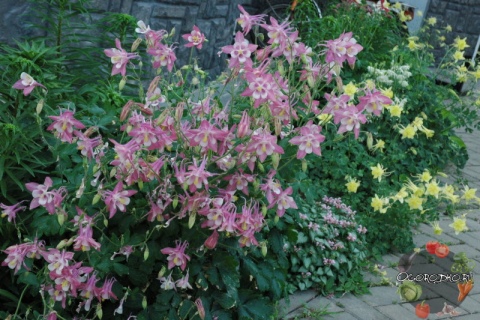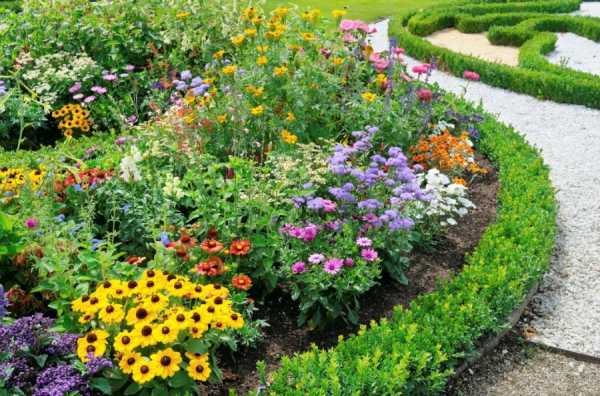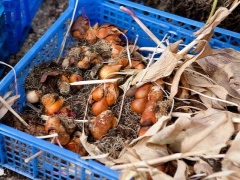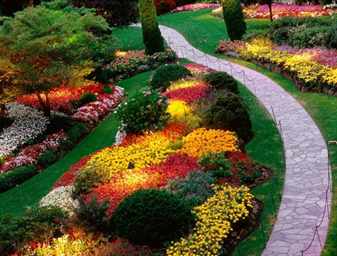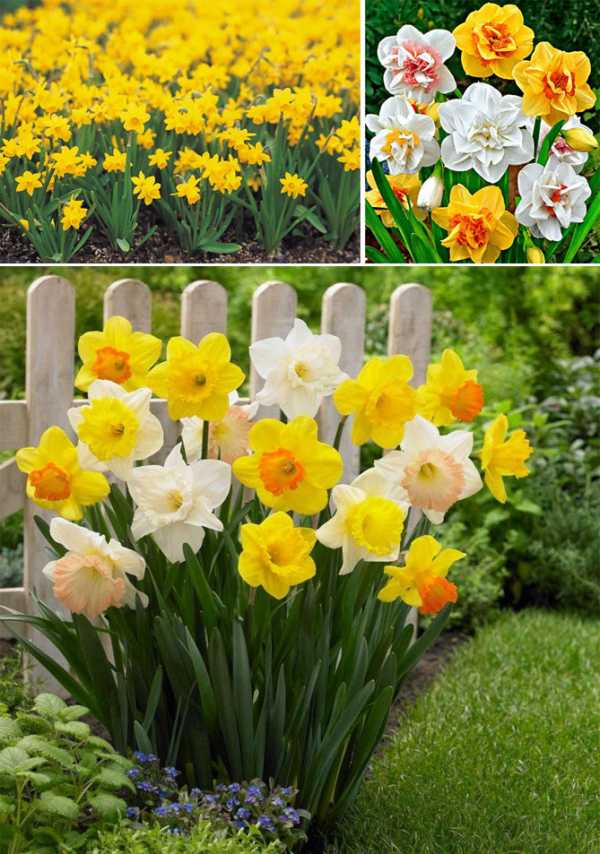Hydrangea plant

Most of the hydrangea species originate from the tropical regions of Southeast Asia, so these plants are grown at home. Nevertheless, there are types of hydrangea that thrive in central Russia.
Hydrangea is a shrub that can grow to a height of 2 meters. Many species do not like direct sunlight and need abundant watering for their normal growth and flowering. Caring for this plant in the garden is no different from similar events for any other shrub: you need to monitor its condition and cut off dry and old branches, it is recommended to cover young shoots for the winter in order to keep the buds alive on them until spring. When it comes to soil, hydrangeas are better off providing a slightly acidic environment.
In gardens in central Russia, the following types of hydrangea are often found:
- large-leaved;
- paniculate;
- petiolate;
- ashy.
Particular attention should be paid to the flowers of this shrub. They are small, but appear as large and numerous inflorescences on a hydrangea bush.
As a rule, the plant blooms from mid-summer to late autumn. Hydrangea inflorescences are blue, purple, pink, white and other colors.
It is important to note the ability of a plant to change the color of its flowers, for example, if you water a shrub with water with aluminum sulfate dissolved in it, then the flowers will turn blue, if you dissolve potassium permanganate in water for irrigation, then the inflorescences will turn pink.
Hydrangea shrubs, with proper care, grow lush and have beautiful green leaves, so they can be used to create real green and flowering fences in the garden.
Examples in landscape design
Shade-loving plants are usually collected in a wide variety of flower beds. Multilevel plantings, as well as island-type flower beds, are very popular. When growing shrubs and flowers in the shade, one should adhere to the scheme: no more than 10 ground cover bushes, 5 medium-sized, 7 low-growing and 3 tall plants can grow on one square meter - only in this case the composition will look harmonious, and the shrubs themselves will feel good.
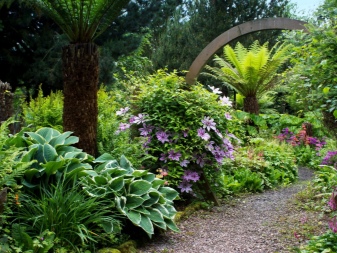
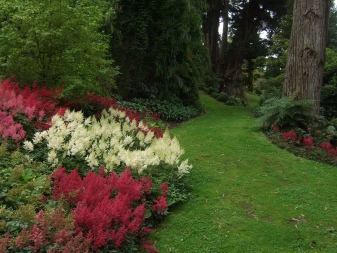
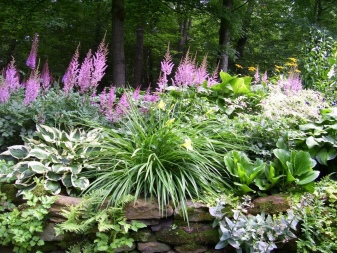
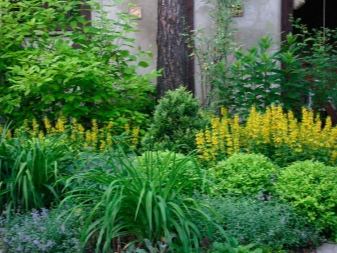
Curly perennials look very impressive in the country.
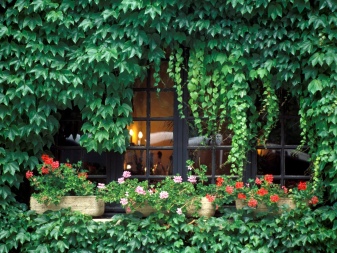

Ornamental shrubs are in no way inferior to them in beauty.
Plants that love shade are very popular with gardeners - they revive the dark and gloomy parts of the garden, while delighting their owners with bright colors for many years, while requiring almost no maintenance.
An overview of perennial shade-loving plants for the garden in the video.
Spicy-aromatic unpretentious perennials for summer cottages
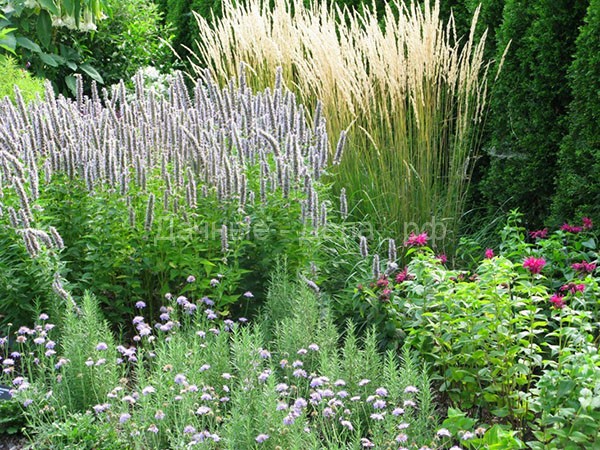
Choosing long-blooming, unpretentious flowers for the garden, one should not overlook the plants that are often popular as spicy, medicinal or fragrant herbs. Moreover, many of them are in no way inferior to flowering perennials, their flowers will decorate flower beds and can be used for cutting.
Today, many varieties of mint, lemon balm, catnip are available to gardeners. On the site, if desired, you can plant hyssop, thyme and even lavender. These plants look great in a separate, "pharmacy" bed, but they can be easily imagined as part of a mixborder, in a rural-style flower bed or in the form of free clumps near a hedge or wall of a house.
Unpretentious and useful perennials, thanks to lush greenery, are decorative from spring to frost. And during flowering, they attract a lot of bees and other pollinating insects.
Oregano
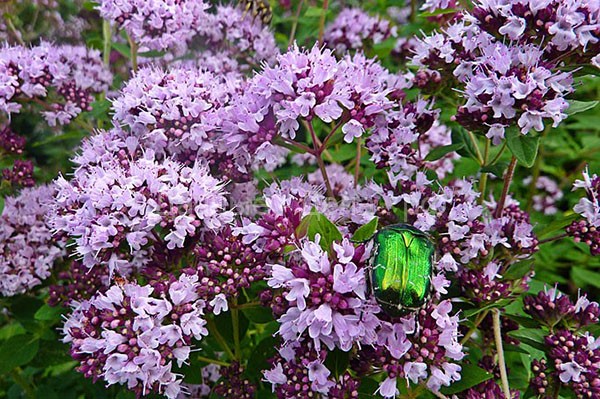
Oregano is a native inhabitant of the European part of Russia.The plant, familiar to many for its characteristic aroma of greenery and pink-lilac caps of inflorescences, prefers to settle in open, well-lit areas with light soil. In nature, oregano can be seen in clearings and forest edges, in oak forests and in dry meadows.
The first oregano greens appear in March, literally from under the snow. By June, the plant forms a lush cap of densely leafy shoots 20 to 50 centimeters high. And a month later, stems with delicate inflorescences-baskets rise above the greens.
The entire aerial part of the plant, incredibly revered in France, Italy, and the USA, has a spicy aroma. Here oregano is grown as a natural seasoning for sauces, salads, pasta and poultry, baked goods, in particular, pizza. Tea with herbs and oregano flowers is no less tasty. Collecting oregano or oregano is carried out from July to October, while the perennial blooms.
Lofant

Lofant or multiforme with lilac-purple or white spike-shaped inflorescences is one of the most noticeable medicinal and ornamental perennial plants. In the garden, the culture easily settles in the lightest areas, does not feel discomfort even in the sun itself and winters well, already from early spring showing everyone the first greens with a purple or bluish tint.
Lofant is so unpretentious that it grows and blooms not only with a lack of moisture, but also on poor soils. Simple care and a little attention - and an unassuming plant will generously share with the summer resident a fragrant, anise-like or licorice-like smell, a herb rich in essential oils and useful for colds, diseases of the digestive system and urinary system.
In the garden, the spectacular inflorescences of the lofant will not go unnoticed by either people or bees. The plant, which blooms from June to late summer, is suitable for decorating front gardens and easily tolerates cutting.
Monarda

Monarda with white, pink, lilac and purple inflorescences is also a resident of sunny, sheltered from the wind corners of the garden with light soil.
For decorative purposes, this fragrant perennial is planted next to other similar plants, as well as in the vicinity of coreopsis and rudbeckia, nivyanik and low-growing annuals, for which a monard up to a meter high will be a luxurious background.
An interesting combination of this plant with an annual delphinium, blue and white large-flowered bells, stonecrops and other crops, allowing you to imitate a corner of a wild meadow in the garden.
In summer cottages, you can often find lemon monarda. Its greenery during the flowering period, that is, from July to September, accumulates a lot of essential oils close to the oils of lemon balm, hyssop, basil and other spicy-flavoring and medicinal plants of their Yasnotkov family.
Curly rose
These flowers will not leave anyone indifferent. Their continuous flowering, stunning aroma, as well as excellent health among gardeners occupy the highest step. The unique shrub is divided into two groups:
- ramblers - fast-growing, wild-like roses that bloom several times a year; reach 8 meters;
- climbers - present numerous large bouquets of small flowers capable of climbing supports and fences; sufficiently resistant to disease.
The difference between these shrubs is in shape: in ramblers, the stems are flexible and long (you cannot do without support), and in climbers they are thick and tough, they grow straight.
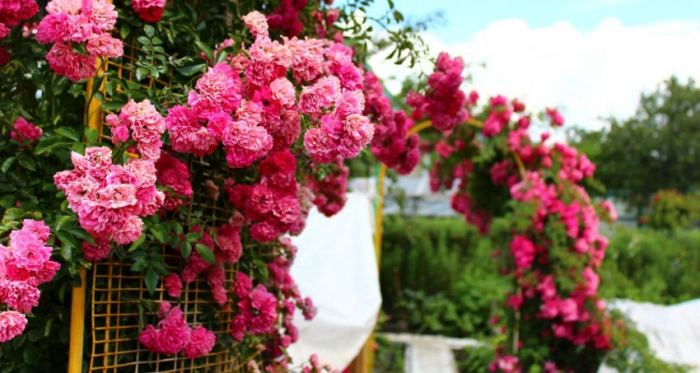

Roses are beautiful in combination with climatis.
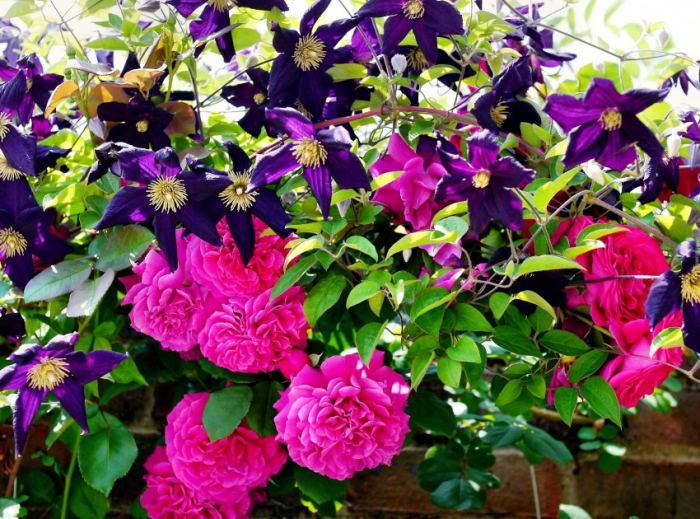
Garden ferns

Speaking of perennial shade-loving plants for the garden, of course, one cannot fail to mention ferns, since it is the humid and shady habitat for them that is the ideal growing condition. Fern, perhaps, apart from high humidity, lack of direct sunlight and good soil drainage, no longer require any conditions for its healthy growth.
Gardeners prefer ferns in shady gardens precisely because of their unpretentiousness, high ability to adapt to various environmental conditions, as well as the beauty of their leaves.
How can you decorate your garden with ferns? There are two fundamentally different possibilities, which are listed below:
- You can take home ferns into the garden from late spring to early autumn. It is recommended to hang the pots with them beautifully, then the descending branches of the plant will give the impression of hanging green balls. It must be borne in mind that it is impossible to immediately take plants out of the house into the open air, but it is necessary to give them the opportunity to acclimatize. To do this, every day for 1.5–2 weeks, they should be placed in a shady place in the garden for several hours, and then brought into the house. After this time, the ferns can be left in the garden on a permanent basis.
- You can plant one of the garden ferns that grow in the wild in the appropriate climatic zone in a shady garden. For example, for central Russia, these types of ferns include Asplenium, Woodsia, Kochedyzhnik, Orlyak and some others. Note that these fern species are no less beautiful than their exotic relatives from the tropics.

